Scuba divers’ opinions on sharks are divided. Either they are majestic, awe-inspiring creatures to see up close, or they are unstoppable killing machines with cold dead eyes just waiting for you to let your guard down so they can take a chomp on your behind. Having a healthy fear of sharks is a good thing. A shark is a wild animal after all, and one bite from its multiple rows of sharp teeth can be fatal. The question is: how often do sharks attack scuba divers? Are these fears warranted?
Statistically, the chance of getting attacked by a shark while scuba diving is so unlikely that you can expect it won’t happen. The International Shark Attack File (ISAF) estimates that the chances of dying to a shark attack in one’s lifetime is 1 in 4,332,817. That means that out of all the risks to worry about while scuba diving, shark attack is probably the lowest priority. You have a higher chance of getting into a fatal accident on your trip to the dive site than from a shark attack. Sharks rarely, if ever, attack scuba divers. Now surfers, on the other hand, are a different story.
In this article, we’ll discuss how often sharks attack scuba divers, and we’ll also provide some safety tips so that you can greatly discourage sharks from attacking you.
Let’s talk shark attack numbers

According to the International Shark Attack File (ISAF), in 2020 there were a total of 129 documented cases of shark attacks worldwide. Of these, 57 were designated as “unprovoked attacks” and 39 were “provoked attacks.”
The US leads the world in number of unprovoked attacks with 33 confirmed cases, 3 of them ending in a fatality. The 33 cases make up 58% of the worldwide total of unprovoked shark attacks, which is a drop from 2019 where the US made up 64% of unprovoked attacks. The only sharks with double-digit numbers of fatal, unprovoked attacks on humans are the great white, tiger, and bull sharks, so these are the ones to keep an eye out for.
Keep in mind, these numbers include all shark attacks in all water-related activities. If we narrow it down to only scuba divers, then only 4% of the worldwide shark attacks occurred while scuba diving. The vast majority of attacks occurred to surfers and open water swimmers at 61% and 26% respectively.
Let’s do some number crunching to see exactly what this means. If we consider that in 2020, there were roughly 2.59 million scuba diving participants in the USA, with 1.88 million diving between 1-7 times (“casual divers”), and 708,000 diving 8+ times (“core divers”).
That means that at the absolute low end, a minimum of 7.5 million scuba dives were done in the US in 2020. Remember this number for a minute. This is assuming the 1.88 million “casual” divers went diving only one time, and the 708,000 “core” divers went diving exactly 8 times each.
Out of the 129 worldwide cases of shark attacks, only 4% occurred to scuba divers, meaning only 5 scuba divers were attacked by sharks. It’s unlikely that all 5 cases occurred in the US, but let’s assume so anyways. That means that, even with our extremely conservative estimates, you had a 1 in 1.5 million chance of being attacked by a shark while scuba diving in the US in 2020 (5 attacks out of 7.5 million dives).

If we assume more dives were done in 2020 in the US, let’s say the 1.88 million casual divers all went diving exactly 4 times (an average between 1-7), and we keep assuming the 708,000 core divers went diving exactly 8 times each, then the total number of estimated dives is now 13.1 million dives. That means you had a 1 in 2.62 million chance of being attacked by a shark while scuba diving in the US in 2020. A shark attack doesn’t necessarily mean a fatality, either!
Don’t just take our word (and our shoddy math with arbitrary estimates) for it. Let’s once again rely on the ISAF to provide concrete numbers. They estimate that the chance of dying from a shark attack in one’s entire lifetime is 1 in 3,748,067. Again, this is not limited to scuba diving, but fatal shark attacks during any activity. Their calculations were done as follows:
“Lifetime risk is calculated by dividing 2003 population (290,850,005) by the number of deaths, divided by 77.6, the life expectancy of a person born in 2003.”
So whether you take our word or you take the ISAF’s word, we both came to a similar conclusion: your chances of being the victim of a shark attack while scuba diving is one in a few million. And even then, it appears approximately only 10% of the attacks are fatal.
So the takeaway is, if you are afraid of getting attacked by a shark, don’t go surfing or open water swimming/snorkeling. Those two groups comprised 87% of all shark attacks in the world in 2020. We aren’t going to do any more math, but we can safely assume that many, many millions more people go surfing than scuba diving, and still the total worldwide numbers of shark attacks are so low (only 129 in 2020).
According to the statistics, you really shouldn’t worry so much about shark attacks as a scuba diver. Instead, why don’t you worry about more pressing issues like the potential of drowning, where the chances are 1 in 1,134 over one’s lifetime.
Why do sharks sometimes attack divers?
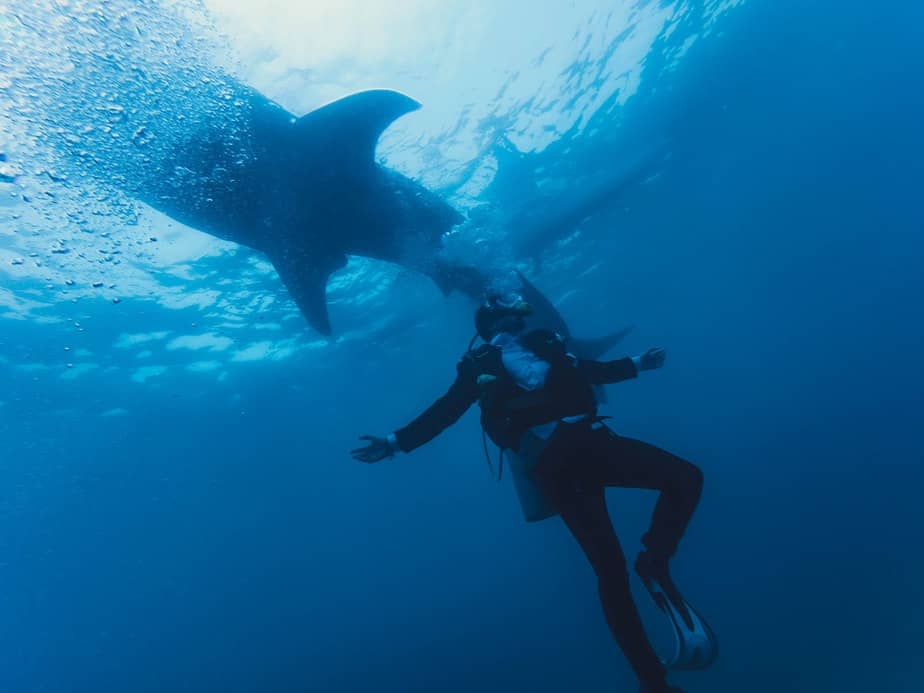
There are various reasons why a shark might attack a diver. The most common reason, according to the 2020 ISAF report, is that 45% of the time they were provoked.
It can be easy to provoke a shark without intending to. We highly doubt these divers had a death wish, but they perhaps made innocent mistakes which cost them their life.
For instance, if they stuck their hand out and tried to grab the shark, following it too closely in its blind spot, or being in groups of fish where the shark was feeding.
As for unprovoked attacks, it mostly occurs due to confusion or curiosity.
A shark might confuse a human for their typical prey. If a diver has reflective gear and is doing a lot of splashing near the surface, the shark can mistake the reflection as light reflection from a fish’s scales, and the splashing as the movements of its prey. We see this happening the most between great white sharks and surfers.
If you remember, in the 2020 ISAF report, the vast majority (61%) of shark attacks occurred to surfers. A surfer lying on their board may trick a shark into thinking there’s an easy meal. When a shark strikes, they will roll their eyes back as they approach their target to protect them. This means that they won’t know they’ve made a mistake until it’s too late.
Sharks typically don’t view humans as food. If they did, then surely the shark attack numbers worldwide would be exponentially higher, and surfing or scuba diving would not be a thing people do anymore. Unfortunately, sometimes there is collateral damage in a shark’s quest for its next meal.
Another reason for an “attack” is curiosity. Like most animals, sharks are inquisitive. If it sees something it has never seen before, it will investigate. Since sharks don’t have hands to touch with, they usually refer to their mouths. They might nibble on something, but from our perspective, those powerful jaws will likely have shredded whatever it was nibbling on.
Of course, you don’t want a shark to bite you or show aggressive behavior indicating an attack. This is why understanding a shark’s behavior is crucial in preventing a shark attack.
How do sharks attack divers?
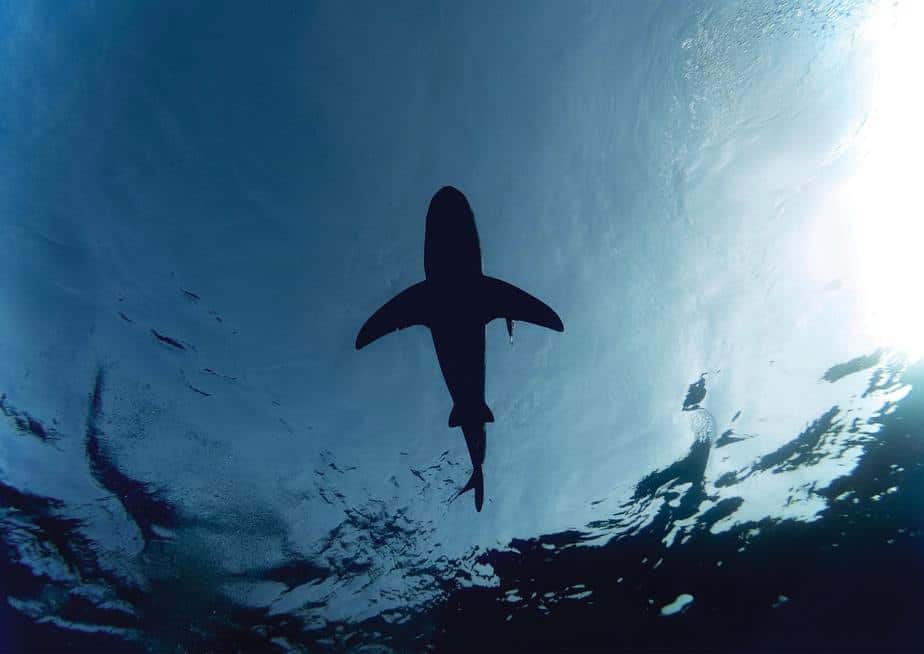
Sharks primarily have three ways to attack. They are: sneak, hit and run, and bump and bite. Knowing how the shark might attack you can help you keep your guard up around them.
1. Sneak attacks
Most of the time, when people think of shark attacks, they imagine the sneak attack. This is probably owing to Jaws, where the titular shark has an iconic scene where it snatches an unsuspecting victim by her legs to her death.
There is some truth to this; if a shark were to attack you, it’d sneak behind you or underneath you and attack where you cannot defend. As long as you maintain eye contact with a shark, the shark will keep its distance because it doesn’t see an opening.
When a shark does a sneak attack, the victim will typically sustain multiple bites. This predatory behavior can occur if a shark confuses you for its usual prey.
As scary as sneak attacks sound, in reality, sneak attacks are probably the most likely type of shark attack. In a related article, we discuss at length how sharks are generally wary of humans, maybe even scared of us, because we are unlike anything they’ve encountered before.
With that said, if you are ever a victim of a sneak attack, the result is almost always fatal. Survivors of such attacks often lose limbs or have a chunk of flesh removed from their body. Sneak attacks often occur to surfers, open water swimmers, or snorkelers, because the splashing makes the shark think you are a delicious fish and the shark will go in for a killing blow.
2. Hit and runs
A hit and run by a shark is when it bites you once and leaves. This typically happens in murky waters and surf zones. Under these conditions, the shark may confuse you for its usual prey, so it goes in for a bite
When it realizes its mistake, it will swim away. Unfortunately, often a single bite from a shark is enough to be fatal.
3. Bump and bites
When a shark isn’t sure what you are, it will circle around you and use all of its senses to figure you out. It’s not sure if it should be scared of you or if it’s safe to be around you.
After all, most marine life don’t swim vertically, use electronic devices, or exhale bubbles out of its regulator. You also don’t smell or taste anything like what it usually eats.
Due to a shark’s curiosity, it may bump into you. It might also nibble at you, again, because it has no hands, not because it’s going in for the kill.
Depending on how you react, this will determine how the shark proceeds. If you begin thrashing and panicking, the killer instinct that the shark has will kick in, because this is typically what its prey does.
The most common shark attack to occur to a scuba diver is most likely the bump and bite. Some divers have experience with having their fins or wetsuit torn through because of a shark.
With that said, most of the time, sharks do not even get close enough to a scuba diver. As we mentioned, if you are maintaining eye contact, or you are with a group of divers, the shark will likely just keep its distance.
Which sharks are most likely to attack scuba divers?

There are as many as 489 species of shark. However, the majority of unprovoked shark attacks were done by only three species: the great white, tiger, and bull sharks.
Though great whites are the most notorious thanks to Jaws, the shark that a diver is more likely to encounter is the bull shark. Great white sharks are actually solitary and generally avoidant of humans.
Here’s a scary thought. Great whites have often been observed via drone footage swimming beneath surfers in California and Australia. You just see a group of surfers having the time of their life, completely oblivious to the fact that there is an ominous outline of a large great white shark beneath them. If you didn’t know better, you’d think it was a scene taken directly from Jaws.
Thankfully, great whites are typically not aggressive, and a scuba diver is unlikely to see one in the first place.
Tiger sharks are much more curious creatures. They are referred to as the “garbage can of the sea” because of their willingness to eat just about everything. That doesn’t mean they are out for blood; they generally are shy of humans but can be curious about divers at times. Their curiosity is often mistaken as aggression.
Lastly, bull sharks are sometimes found near shores and coral reefs. Frequent divers will almost certainly see bull sharks occasionally. Bull sharks can be aggressive at times.
With that said, divers frequently swim with bull sharks without issue. Some expeditions even specifically seek out bull sharks to swim with.
How to avoid a shark attack
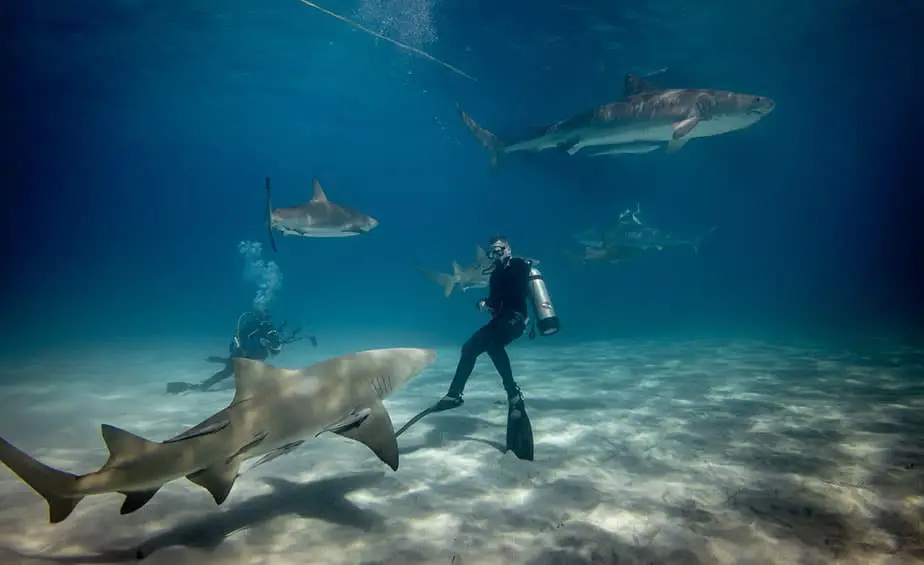
Rather than just praying that you won’t get attacked by a shark, you can be more proactive about it. By following the tips below, your chances of getting attacked by a shark are drastically reduced.
Don’t wander off by yourself
Any natural predator knows that when their prey is alone, that is when they are most vulnerable. They can more easily sneak up behind it or underneath it and take a nice chomp. Not that we are their prey, but if the water is murky, they just might mistake us for one.
When you’re with a group, the shark will be discouraged from approaching you. A group of divers can appear to be one singular, larger fish to the shark, and this will reduce the likelihood of being attacked by a shark.
Watch what you wear
There are two main areas to focus on when considering what to wear when scuba diving. The first is to avoid anything reflective, such as jewellery or a particularly shiny dive watch. When light reflects off of it, it can appear to the shark as shiny fish scales. This may not only pique the interest of sharks, but barracuda may also attack.
Furthermore, avoid wearing contrasting colors. It’s theorized that sharks have black and white vision, so they are very good at noticing contrast. If you are wearing a bright colored wetsuit, you can really stand out against the blue water, drawing their attention to you. There’s a reason why yellow is often referred to as “yum yum yellow.”
Make yourself look small or big
Well, which is it? Depending on the context, you might prefer to look small or big. It’s up to you to make this call. Both have their advantages.
If you encounter a shark that doesn’t seem to mind your presence at the moment, then make yourself look small. This will ensure that the shark either doesn’t see you, or doesn’t think you are a competitor for food. You can stay put and watch the shark as it does its thing as well.
On the other hand, if a shark has noticed you and is starting to circle you, then you want to make yourself look as big and imposing as possible. Never keep your eyes off it. If the seafloor is close by, descend to it so the shark can’t attack you from underneath. When a shark sees it has no opening, it’s unlikely to approach for an investigative bite.
Avoid diving at certain locations/times
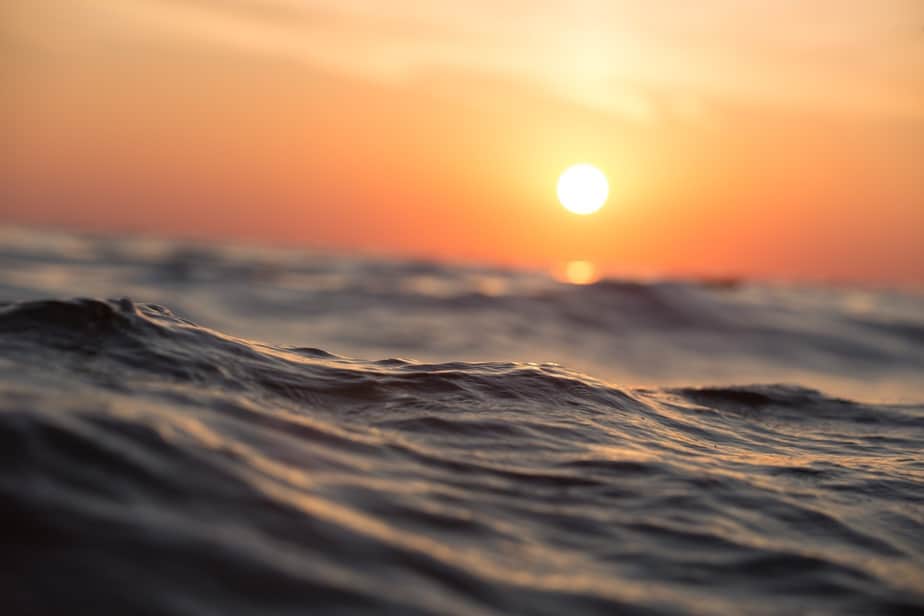
Well this one is very straightforward. If you know that the waters are shark-infested, and you are afraid of sharks, then don’t risk a dive.
Another factor to consider is when to dive. Sharks are mostly active during dawn or dusk, which is when they are feeding. If you are in the waters during this time, and a hungry shark mistakes you for prey, they might be more aggressive than normal.
Furthermore, don’t dive in waters where sharks are being fed. In general, humans are discouraged from feeding wild animals. Unfortunately, due to tourism, sometimes animals are fed regardless due to ignorant tourists, or greedy operators that want people to pay money to see sharks. By feeding them, they ensure sharks will show up.
The downside to feeding sharks is that certain sharks become used to humans. In fact, they become expectant that all humans provide them with food. When these sharks see a diver, they won’t hesitate to approach, which might result in an attack.
Even in these situations, shark attacks are rare. However, sharks that aren’t afraid of humans are simply more dangerous.
A shark that is hungry will be less picky about what to eat. You should not dive in areas where people are actively fishing because large clusters of fish are likely to attract the attention of sharks. Hooked fish will thrash around wildly, and when a shark senses this, it will go into a feeding frenzy.
Always keep your eyes peeled for danger
We think a shark certainly qualifies as a potential danger to keep an eye out for. This is more of a general scuba diving tip than one specifically for sharks.
If you’re not careful, you might accidentally run into a shark in certain areas like steep drop offs or sandbars because sharks like to hunt around those areas. Sharks are also likely to stay by the surface.
Additionally, if you do notice a shark, pay attention to if it’s one of the three aforementioned sharks with the highest frequency of unprovoked attacks on humans.
Never turn your back on a shark. Once you notice one, maintain eye contact with it at all times. Sharks like to take their prey by surprise and don’t want to risk an injury from one that has its guard up.
Why are surfers more likely to get attacked by sharks than any other group?
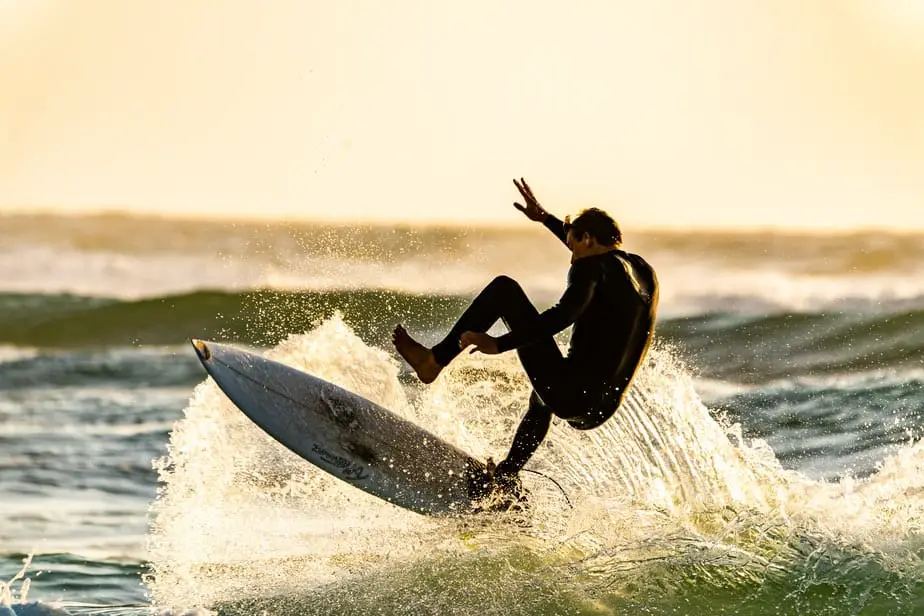
How come, among the 129 worldwide cases of shark attacks in 2020, such a high percentage of these attacks were done on surfers (61% vs 4% for scuba divers). What is it about surfing that makes sharks so attracted to surfers?
The theory is that surfers engage in “provocative activities” that make a shark think the surfer is easy prey. While surfing, surfers are likely to kick their feet, splash around, or even wipe-out. All of this indicates to a shark “easy prey.”
Sharks, like many predators, are opportunists. If it sees a fish thrashing around wildly or in distress, it most likely means they are injured and therefore an easy target. Splashing might indicate a distressed fish. When a surfer wipes out, they are completely exposed and sharks love when their prey drops their guard.
Furthermore, when a surfer is resting on their board at the surface, it can look like a tasty seal or a turtle to a shark.
In other words, most of the time when a shark attacks, it’s simply a case of mistaken identity. It doesn’t see a human and think “food.” However, if you splash round and let your guard down like its usual prey, their feeding instinct will kick in and you might be in trouble.
Sharks are good at smelling blood. What about menstrual blood?
Female divers often wonder if sharks can smell their period. This is a valid question, especially since we know that sharks’ keen sense of smell can detect a drop of blood from a third of a mile away.
Thankfully, it seems that menstrual fluid does not not attract sharks. After all, menstrual fluid is not just blood, but it is also the lining of the uterus, cervical mucus, and other secretions. Sharks can distinguish between period blood and the amino acids found in the blood and guts of marine animals.
In fact, it seems like sharks don’t care much for human blood at all if the experiment conducted in the video above is to be believed.
Parting words
Statistically, sharks generally don’t attack scuba divers. With millions of scuba dives conducted each year, the fact that on average only about five divers a year fall victim to a shark attack makes it so unlikely to happen that you should probably be more worried about getting in a car or an airplane on the way to the dive site.
The main reason sharks don’t attack scuba divers is because we are an anomaly to them. Also, we are less likely to perform “provocative actions” around sharks in the same way that surfers often do. We are not likely to get mistaken for a seal or a turtle.
On the whole, sharks are wary of scuba divers. We are relatively large creatures which look like we might pose a threat to them. We don’t look like their usual prey, and judging by how uninterested sharks appear to be around human blood, it doesn’t seem like they like our taste anyways.
Plus, there are tips you can follow to discourage sharks even further from attacking, such as diving with a group, never letting a shark get into your blind spot, or even giving a shark a good smack on its sensitive nose to startle it. It’s unlikely for scuba divers to get attacked by sharks.


